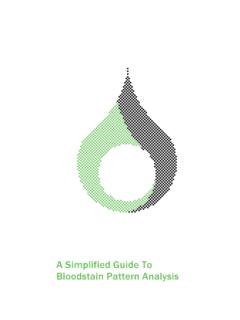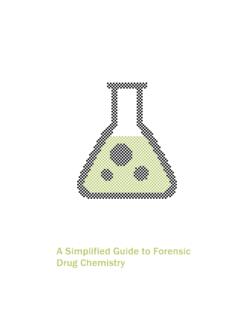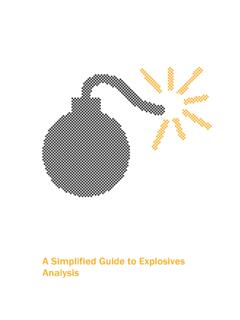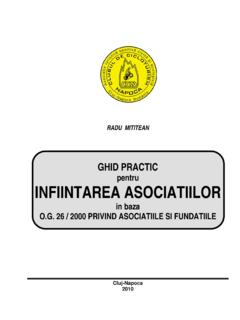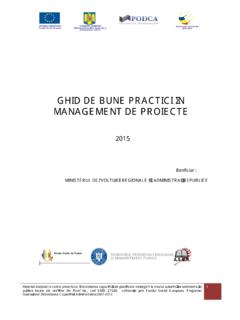Transcription of A Simplified Guide To Crime Scene Photography
1 A Simplified Guide To Crime Scene Photography Introduction Anyone who has seen the movie MY COUSIN VINNY (1992) knows how a snapshot can save the day. In the film, inexperienced New York lawyer Vincent LaGuardia Vinny Gambini travels to a small southern town with his fianc e, Mona Lisa Vito, to represent his cousin in a murder case. Mona Lisa s incessant picture taking with a cheap pocket camera causes frustration throughout the film, but eventually produces a photograph that holds the key to the case.
2 Photography of everything from landscapes to historical events has preserved and illustrated history for the past 200 years. When a photograph of a forged document was presented and allowed as courtroom evidence in 1851[1], Photography as a forensic tool was born and soon became a boon to cases of identification and Scene analysis. Crime Scene Photography became cutting edge in the 1870s and new technologies have expanded its use ever since.
3 In this discussion, photographs are not evidence in and of themselves, but provide visual documentation of the Scene and locations of evidence within the Scene . Photographs taken at a Crime Scene allow investigators to recreate that Scene for later analysis, or for use in the courtroom. If the Crime Scene Photography does not thoroughly and accurately document the entire Scene , it could be detrimental to the investigation and potentially damaging during a criminal trial.
4 Principles of Crime Scene Photography There is no prescribed length of time it takes to photographically document a Crime Scene . The amount of time spent depends on the size and [1] Luco vs , 64 (23 How.) 515, 162, L. Ed 545 (1859) complication in the Crime Scene , how much there is to document and environmental factors like weather or danger to the investigative team. It can consist of thousands of photographs and hours of work.
5 Crime Scene Photography should not just focus on the obvious. The purpose of Crime Scene Photography is to document what is there and where it is in relationship to the Scene , whether it is obviously connected to the Crime or not. For example, a photographer in Florida shot the inside of every cabinet and the refrigerator at a homicide Scene in a home, just as a matter of procedure. It was later discovered that the victim had a receipt for a six- pack of beer, matching the beer shown in the photograph of the refrigerator.
6 Relatives noted that the victim did not drink beer. Further investigation led the team to the convenience store where the beer was purchased and the surveillance tape showed the victim with an unknown person purchasing the beer. It turns out that the victim had picked up a hitchhiker, purchased beer for that person and come back to the house. The photograph of the refrigerator contents had created the link enabling the investigators to find the suspect.
7 Capturing the Scene Photography , or writing or drawing with light , is defined as the process or art of producing images of objects on sensitized surfaces by the chemical action of light or of other forms of radiant energy, such as X- rays, gamma rays or cosmic rays. Fixing an image permanently has been possible since the 1820s in a variety of ways from the daguerreotype, to silver plates, to film and now digitally. Some may consider Photography more of an art than a science, but well- taken Crime Scene photographs can aid scientists, investigators and members of the court in their search for the truth.
8 This makes Photography a critical first responder skill. Larger agencies may have specially trained and certified Crime Scene photographers with high- end cameras and lighting to document Crime scenes and evidence, but more often the first responder needs to do what they can with equipment assigned to them. That said, many of today s digital point- and- shoot cameras have a variety of settings that, with some basic operator training, allow for proper documentation.
9 Controlling the Light Photographers use several means to tell the camera how to capture the image including aperture, shutter speed, depth of field and white balance. Aperture refers to the size of the opening that lets light into the camera and shutter speed is how long that opening, or shutter, remains open. Depth of field is the amount of area in front of (foreground) and behind (background) an object that remains in focus. Lastly, white balance allows the camera to record the proper temperature of light, resulting in an accurate representation of the color tones of objects in the photograph.
10 Brightening the Darkness Experienced photographers often use a technique called painting with light to expose image details in dark or near- dark conditions. In this technique, the shutter is held open for seconds or minutes and the photographer walks through the Scene adding light from sources such as a flashlight or detached camera flash. Crime Scene at night & after using the painting with light technique. (Courtesy of Scott Campbell) However the photographer chooses to capture the image, the main reason for Crime Scene Photography is to thoroughly document the entire Scene , the evidence, and any areas of special significance to the investigation.




